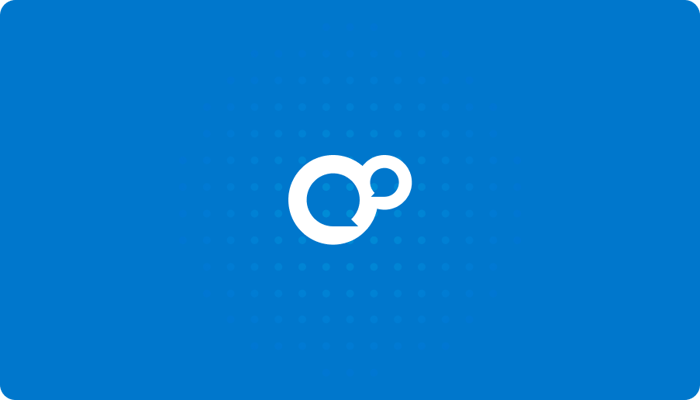The process of getting people started in an organization or onboarding is not just about having them on board, it’s also about getting people on board.
Onboarding is a time of first impressions: the impression the organization makes on new hires and the impression they form of the organization. At this critical juncture, it’s vital that an organization make the right impression and impress on its new hires the vision it has and their part in it. It can mean the difference between your new hires becoming permanent fixtures or deciding to walk away at the first, better opportunity.
So, how do you make sure that the impression your organization makes is the right one? Every company will have its mission statement and policies that explain what it’s about. But to someone just in the door that can be very abstract and not terribly relevant. New hires are too busy coming to terms with a new environment, new colleagues and a whole lot of new things to learn – and quickly.
Making sure that new hires understand their role, not just in the immediate future but also in the medium term, is critical. You need to explain how the role they’re filling fits in with the organization’s broader goals. This is a consideration that can be easily overlooked in the rush to see them achieve proficiency, improve productivity and start repaying the investment you’re making in them.
But beyond a welcoming environment, new hires need to see where they’re going. They need to feel that there’s a path they can follow that will make them feel and fully participate in the organization’s growth. In the longer term that can mean career development through CPD.
In the short term, it means being part of a team and working within a collaborative working environment. The designation ‘new hire’ needs to be as temporary as possible and speedily transformed into a colleague. They need to see they’re part of the vision and act like they’re part of a team. Onboarding is both a process and a state. The process is the means by which you come to be fully ‘on board’. Training is critical to making sure that the process takes you to that destination.
Onboarding training has to be a continuum. Too often onboarding is regarded as a series of events. New hires are taken away to a classroom or sat at a desk to consume some onboarding training from a learning platform.
There are at least two things wrong with this picture. The first is the erroneous belief that training can be consumed at a single sitting. One-off training is often forgettable, and the forgetting starts almost as soon as the session is over. That holds true whether it’s classroom-based, elearning or a blend of both, and regardless of whether it’s onboarding or any other training. If the problem of forgetting applies across the board, imagine how much more likely it is when people are new and facing the added challenge of getting to know their colleagues and the environment.
Onboarding needs to be a process that can continue as long as it’s required, and training needs to facilitate that by being accessible over time and when needed.
The second main problem with onboarding training is that it often happens in isolation. Instead of taking the training while beginning to work, the new hires are taken away to the classroom or isolated at their desk. This has the effect of making onboarding distinct from working and removing the context in which the information learned is to be applied. Onboarding training needs to be brought into the workflow to demonstrate to new hires the real relevance of what they’re learning.
How elearning can change the picture
One way of ensuring that onboarding becomes a process rather than an event is to use elearning. A key advantage of self-paced learning is that it removes the reliance on a one-size-fits-all training. Properly implemented elearning can allow new hires to take in information at their own pace and also gain credit for what they already know through recognition of prior learning (RPL).
Remember your new hires don’t necessarily come from the same background and they will have had many different experiences and different levels of experience. The fact that they’re not a standard group makes training them more complicated. The flexibility of elearning allows you to tailor and personalize learning to individual new hires while at the same time being adaptable to deliver standardized information that reinforces your organization’s vision, culture and policies.
The idea of filling gaps rather than offering a blanket (or blizzard) of information is important. How you track and monitor the uptake of e-learning is critical here. By using an LMS to track usage and satisfaction with your elearning resources you can continually enhance your offering to new hires, making the onboarding training more relevant and thus more effective. You want them up to speed, but at their own pace and by meeting their own needs.
By combining AI with elearning, it’s possible to go further in the quest to make onboarding training continuous and situated in the workflow. AI can help unlock resources stored in the LMS and deliver onboarding at times of need and demand and not just to a set timetable. It allows you to have the onboarding process run in parallel to the acclimatization to working in the new organization.
AI in the form of a Virtual Assistant (VA) or Chatbot extends the scope of training by introducing an element of mentoring or coaching. A VA can respond to requests and take charge of the timetabling of information. Instead of pushing all this information at new employees, the Virtual Assistant guides them through all the processes and information they need at their own pace where and when they need it.
For example, a VA can respond instantly to specific questions on procedures like how to fill out expense requests or order IT or other office equipment. It can schedule sessions on how to comply with health and safety policies and other key company procedures. Any updates or refinements can be rolled out through the assistant.
AI interrogates information and returns the solution by way of an answer to a specific enquiry, marshalling and adapting available resources to meet the training need. Instead of being swamped with too much at one go, assisted by AI a new employee can digest the information in bite-size chunks.
The place for microlearning
Remember that new hires do not represent a homogenous cohort of learners. They may be new to you (and you to them) but they come with their own set of experiences. Typically onboarding has been seen as an area for macrolearning, providing the big picture, an overview of the new organization. But if we recognise that new hires as learners do not have a set profile and will already come with some experience and information about their jobs and the way organizations work, it’s more likely that they’ll need more microlearning as they find their feet. The introduction of AI facilitates a microlearning approach while making the best use of macro resources.
You can extend the reach of microlearning further by making it available on mobile devices. Allowing new hires to access onboarding information on their smartphones or tablets means they’re taking the training resources with them as they go which broadens the learning arena and helps realize onboarding as a process existing within the workflow.
AI and microlearning
Intelligent software, like a chatbot, can use microlearning content to help mentor learners beyond formal macrolearning, targeting material at individual learners. This can be as simple as a chatbot issuing a reminder to take a quick piece of refresher training, to timetabling and delivering regular check-ups or assessments, to recommending content based on job role, task or critical updates to training.
AI can dynamically use microlearning content to support performance and intervene where needed. It’s making intelligent use of microlearning’s great virtue: easy access to quick, targeted information. In a fast-paced, ever-changing work environment microlearning can deliver just enough information, just in time, for time-strapped workers. First impressions can stay with you for a long time and color your outlook.
Successful organizations take in new employees and retain them, making maximum gain from their investment by creating and holding on to an experienced and productive workforce. Onboarding can greatly contribute to that healthy outcome by transitioning new hires into the workflow where they can contribute and collaborate effectively and productively with their colleagues.
The benefits of an onboarding process that recognizes the real needs of new hires will be evident in a swifter move to proficiency, the development of better motivated and engaged employees, and a willingness to stay on, gain experience and contribute. Investing in the right onboarding strategy and getting people off to the right start represent a win-win for employees and organizations alike.
Microlearning at Learning Pool
Take our new Learning Pool Platform. Learning Pool Platform has been designed to provide immediate support for microlearning through Flo, our AI-powered, virtual learning assistant. Learners can quickly search, find, take information from, and launch the specific learning content that they need at any given moment.


